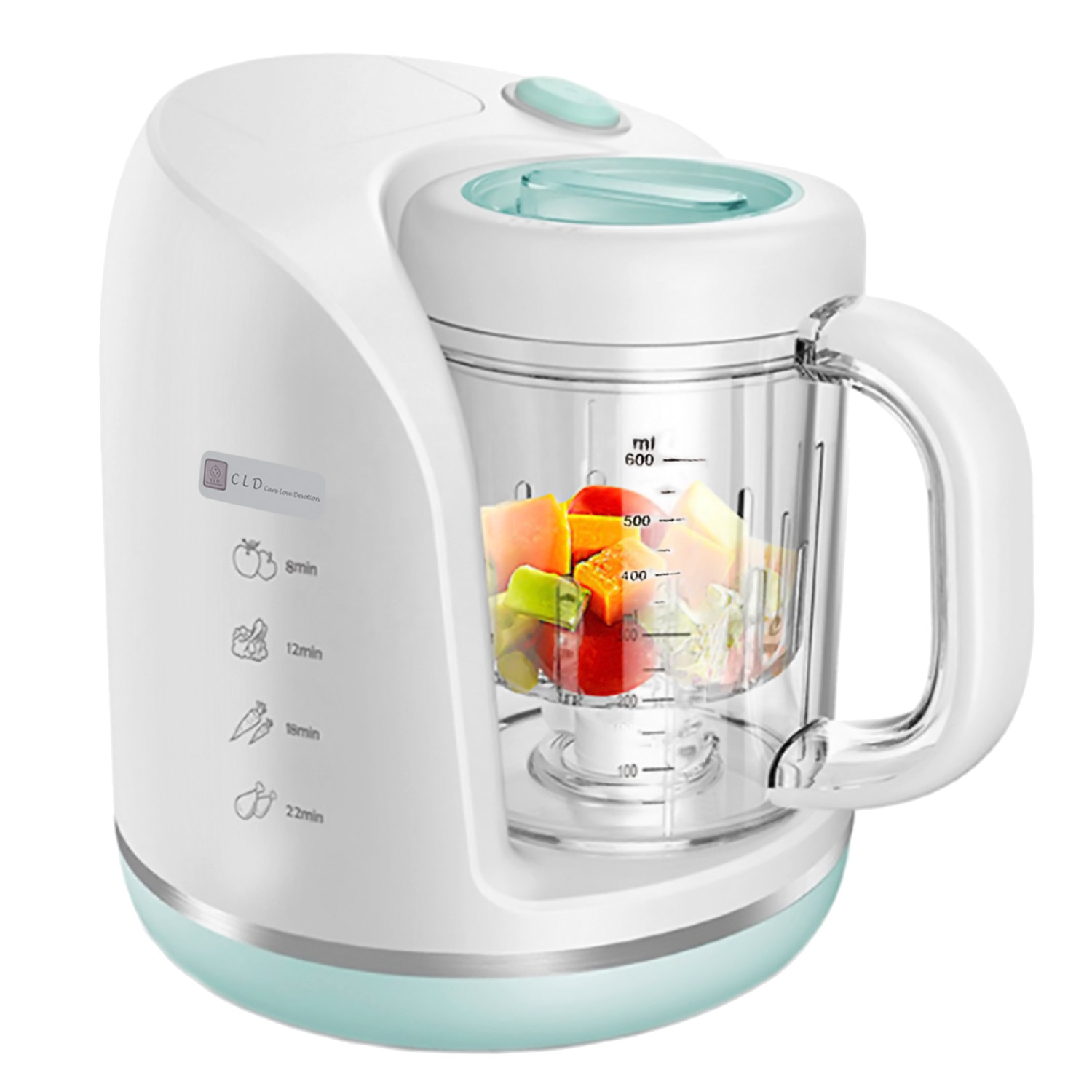Baby food squeeze bottle
Best Reusable Pouches for Babies and Toddlers (Durable & Easy to Clean)
Having a reusable pouch on hand for your baby or toddler is a great way to expand the list of foods they’re able to easily feed themselves. I sorted through the top baby food pouches on the market so you don’t have to—and found the ones that are much less messy for kids to use!
Reusable Pouch
A reusable pouch is a pliable container used to hold baby food or other soft foods such as liquids or applesauce. They are an easy way to make homemade baby food pouches you can buy at the store, which can save money and give you total freedom over the foods you put inside them.
They’re typically made from silicone or BPA-free plastic. And they make it easier for little kids to drink smoothies and to eat foods that are otherwise tricky to self-feed with a spoon from a young age.
TIP: These work well with any puree, applesauce or yogurt type of texture. Or try my 10 No-Cook Baby Foods.
Reusable Baby Food Pouch
The beauty of these pouches is that you can control what goes in them to offer foods that are lower in additives such as sugar and salt. And you can save money since homemade foods put into a reusable pouch will be less expensive over time than buying all pre-made pouches.
That’s not to say that pre-made pouches are bad, but just to explain why some of us love them so much!
Are reusable pouches good for babies?
These pouches are great for babies as it allows them to feed themselves a wider range of foods that they could eat with a spoon efficiently. Instead of needing the coordination needed to eat yogurt from a spoon that they are holding, they can simply hold the pouch and suck it out.
Of course, babies need to be given the opportunity to learn to use utensils, and to move other textures around in their mouths, so view these as a tool in your arsenal—not the only way to feed your baby. I love to combine purees, pouches, and baby led weaning style foods when feeding kids.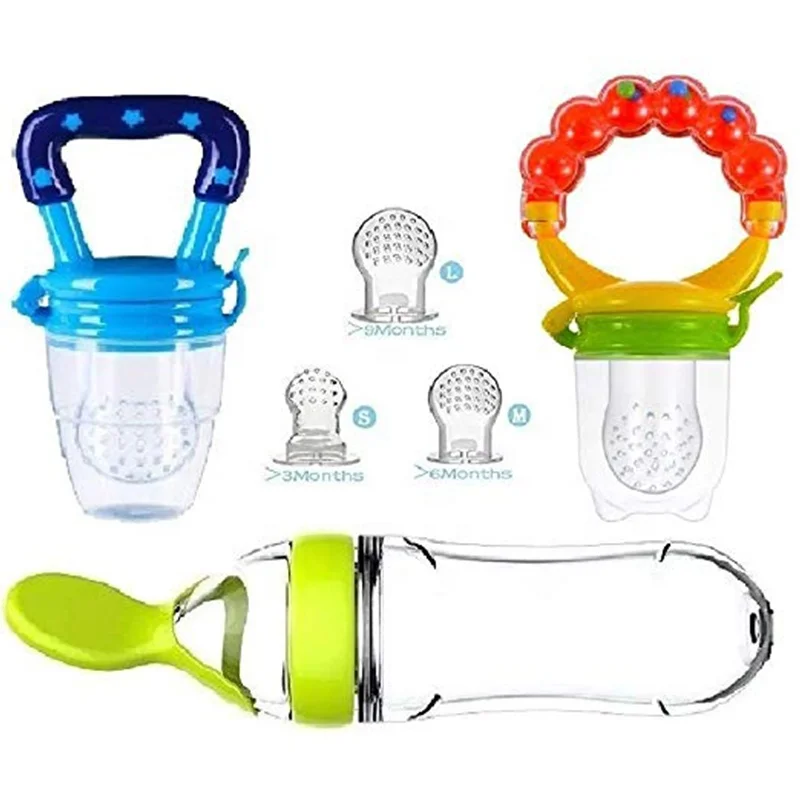
We started using these around 7 months as an option to have in the mix at mealtimes.
TIP: Try my top Baby Food Combinations in your pouch!
Are they good for toddlers?
These pouches are an awesome tool for feeding toddlers since they hand the feeding over to the child and let them be in control of what goes into their mouth—which they love!
I’ve used these reusable pouches with my kids and find them to be one of our most beloved items of feeding gear. We use them at home and to pack smoothies, applesauce, and yogurt for daycare and school.
They are also much less prone to making messes than some other straw cups since the good ones make it virtually impossible for the child to deliberately squeeze the food out. (But it’s easy to suck out.)
We’re super fans of the Squeasy Snacker pouch from Squeasy Gear. It’s easy to clean, super durable, and comes in two sizes–3.5 ounces and 6 ounces so you can choose the one that’s best for the age of your child.
We’ve steadily used our three for the past 5 years and have seen no signs of wear or tear. These are my top pick since the kids can’t deliberately (or accidentally) squeeze out the food. Which makes it so much less messy than other options.
TIP: Do be sure to put the red insert in the cap since without it, the food inside will go everywhere. And if your kid plays with the lid instead of drinking, simply remove it when you hand them the pouch.
These Weesprout reusable plastic pouches are made from food-safe and BPA-free plastic and are easy to fill—the bottom of the pouch unzips for easy filling. The one downside to these is that a child can purposefully (or by accident!) squeeze out the contents so keep that in mind.
It can help to hold the pouch with your baby as they learn to suck the food out. A set of these is a great option for sending food to daycare or preschool since you can make a batch of food in bulk and freeze them for future use.
TIP: Be sure to choose the size that you want when ordering these as they come in a few options and some of the sizes may be too large for babies and toddlers. I prefer to start with the smaller 3.4 ounce size.
Which foods are best to put into a reusable pouch?
Here’s a look at some of the foods we like to serve in a reusable pouch for babies and toddlers.
Best Apple Puree (with Flavor Combinations + Storage Tips))
There’s no one right serving size for every child, so start with a smaller amount and offer more as indicated by baby. When they turn their head or close their mouth, end the meal—it’s usually pretty obvious when they want to be done!
Get the recipe
Easy Crockpot Applesauce
With just a few basic ingredients and fresh apples, your crock pot can do the rest of the work of making applesauce!
Get the recipe
Easy Apple Yogurt (2-Ingredients!)
Made with a base of just two ingredients, this Apple Yogurt takes just seconds to make—and is a delicious breakfast or snack option.
Get the recipe
Best Banana Yogurt
This recipe make enough for 2-4 servings of yogurt, depending on the appetite of your child. See the Notes at the bottom for storage tips if you have leftovers. You can also cut the recipe in half to make a smaller amount.
Get the recipe
Favorite Strawberry Yogurt
You can use fresh or frozen strawberries, freeze-dried strawberries or strawberry puree. This is an easy way to make flavored yogurt at home for breakfast or snack.
Get the recipe
Favorite Healthy Toddler Smoothie (with Veggies!)
Learn to customize yummy smoothies for your toddler by starting with one simple recipe, then adjusting based on which fruit and veggies you'd like to use.
Get the recipe
Easy Overnight Oats with Applesauce
You can easily double (or triple!) the recipe to make more servings.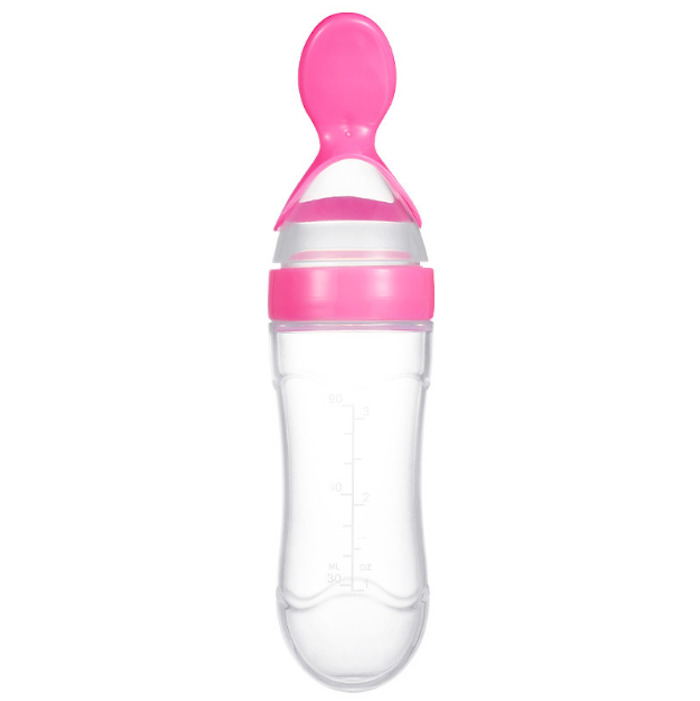 It uses a 1 to 1 ratio of yogurt to applesauce so you can easily scale it up. Mix these up the night before you plan to serve them.
It uses a 1 to 1 ratio of yogurt to applesauce so you can easily scale it up. Mix these up the night before you plan to serve them.
Get the recipe
Favorite Coconut Chia Pudding
I like to use canned full-fat coconut milk for the best flavor and creamy texture, though you can use “light” coconut milk if that’s what you can find at your store.
Get the recipe
Best Baby Food Pouches (Easy and Homemade)
This easy baby food pouch is an easy staple to serve as a baby meal or snack and contains fruit, protein, calcium, fiber, and healthy fats. Find more flavor ideas in the Notes at the end of the recipe.
Get the recipe
Baby Food Combinations (50 Easy Stage 2 Recipes)
For a 6 month old baby, 1-2 tablespoons baby food may be plenty for a single serving. For a 9 month old baby, they might want ¼ cup or more. Adjust the servings based on your child’s hunger, using a roughly one to one ratio of the purees in each combination. Nutrition will vary according to the combinations you use.
For a 9 month old baby, they might want ¼ cup or more. Adjust the servings based on your child’s hunger, using a roughly one to one ratio of the purees in each combination. Nutrition will vary according to the combinations you use.
Get the recipe
10 No-Cook Homemade Baby Food Recipes
You'll choose ONE ingredient to blend up—a fruit, a veggie, or beans. See the list below. You can make enough for a few days or make a double batch to freeze more baby food for future weeks. The nutrition information will vary based on which ingredients you use.
Get the recipe
Best Recipes for Homemade Pouches
Making homemade baby food pouches can be no muss, no fuss, and super yummy with these 15 easy recipe ideas. These are a great way to save money, share lots of flavors with babies and toddlers, and have convenient foods ready to go!
TIP: Find my 15 best homemade pouch recipes here.
How to Clean a Reusable Pouch
Take the pouch completely apart and use hot soapy water and a bottle brush and/or a straw brush to make sure you get into all of the areas where food may linger. Let dry on the bottle rack.
Best Tips for Success
- Make sure that the food you put into the pouch is totally smooth so a chunk doesn’t get stuck in the spout.
- Let your child have the time to practice using the pouch—it will be a new skill that they need to develop, so don’t get frustrated if they don’t take to it right away.
- Take all of the pieces apart before you start to clean it.
- If using the kind of pouch that seals on the bottom, triple check that it’s totally secure before you hand it over.
- You may also like Favorite Kids Plates, Best Utensils for Kids, Favorite Suction Bowl, Best Sippy Cups, and Ultimate Guide to Baby Led Weaning.
I’d love to hear your thoughts on using reusable pouches and do let me know if I missed your favorite!
This post was first published May 2019.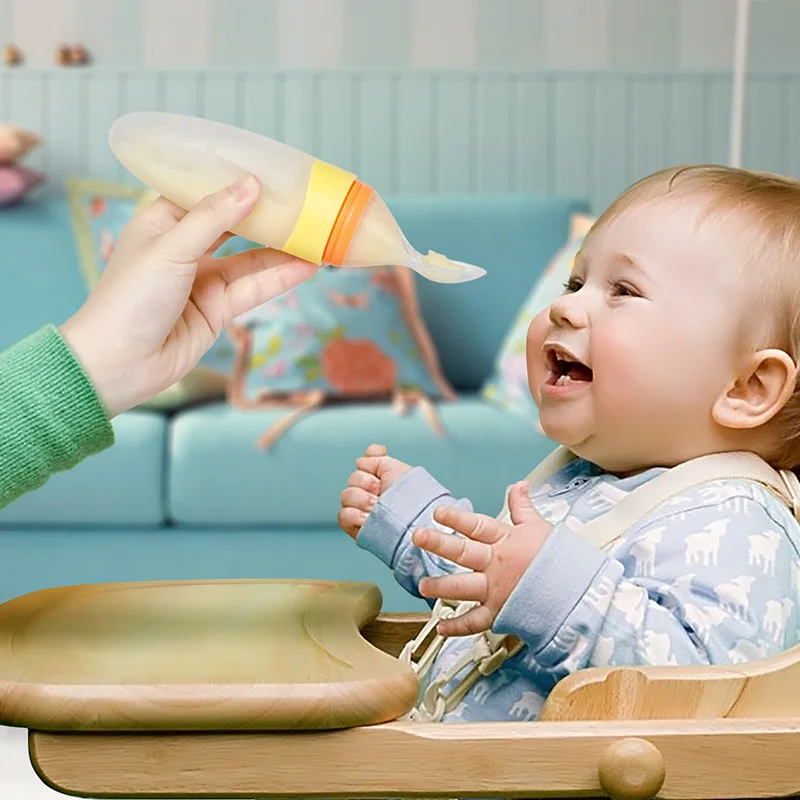
7 Best Reusable Baby Food Pouches (2022 Reviews)
Reusable baby food pouches make it easy to feed your baby all your homemade baby food goodness at home and on the go. But we’ve learned the hard way that some pouches do a better job than others.
You don’t want pouches that leak or are hard to fill. And you definitely want your pouches to be easy to clean to prevent mold and bacteria build-up.
As baby-food-making mamas ourselves, we’ve tried enough of these pouches and listened to the reviews of other parents to figure out which pouches are the most convenient. We’ve compiled this list of the seven best reusable baby food pouches so you can make feeding time easier for everyone and continue to feed your baby your homemade baby food when you’re on the go.
Our Top Picks
We love honesty! Mom Loves Best earns a commission through the following hand-picked links at no extra cost to you.
Image
Model
Product Comparison Table
Features
Clear Winners
Healthy Planet Pouches
- Environmentally friendly & recyclable
- Transparent
- Comes with an extra lids
Check Price
High Quality Must Have
Squeasy Snacker Pouch
- Waterproof and leakproof
- Made of very flexible material
- Can be easily washed
Check Price
Best Silicone Pouch
Haakaa Yummy Pouch
- Super durable
- Variable-flow opening
- Free of toxins and microplastics
Check Price
Great for Older Kids
Squooshi Large
- Chemical free
- Larger than other pouches
- Used for multiple ages
Check Price
Easy to Clean
WeeSprout Food Pouch
- Easy to clean
- Eco-friendly
- No pesky corners to trap food
Check Price
Bulk Option
Baby Brezza Pouches
- Freezer safe
- BPA-, phthalate-, and lead-free
- Filling funnel included
Check Price
Cutest Designs
ChooMee Food Pouch
- 5-ounce capacity
- Reusable
- Can be stored in freezer
Check Price
Table of Contents
- Our Top Picks
- The Best Reusable Food Pouches of 2022
- What are Reusable Baby Food Pouches?
- Why Do I Need Reusable Baby Food Pouches?
- How to Choose Baby Food Pouches
- How Many Reusable Food Pouches Do I Need?
- How to Clean Reusable Baby Food Pouches
- The Bottom Line
The Best Reusable Food Pouches of 2022
Here are seven great reusable baby food pouches to consider.
1. Healthy Planet Clear Reusable Food Pouches
Clear Winners
Check Price
These pouches are transparent on one side so you can see how much food is left and verify that it still looks fresh when you take it out of the fridge.
The bottoms open completely to clean them, and the leakproof dual zipper helps prevent messes. If you’re like most moms, the last thing you need is another mess on your hands.
They’re freezer and dishwasher safe and completely recyclable once your little one doesn’t need them anymore. They also come in two sizes to ensure you get the perfect capacity to match your little one’s appetite.
Pros
- Environmentally friendly and recyclable.
- They’re transparent.
- They come with extra lids.
Cons
- The lids are not attached, so they can get lost.
- Your child will outgrow the smaller ones quickly.
2. Squeasy Snacker Silicone Baby Food Food Pouch
High Quality Must Have
Check Price
This pouch is made of food-grade silicone that fills from a wide-mouth top, so it can even be filled with liquid and not spill. The bottle-shaped design stands on its own, no matter how empty it is, and comes in three sizes and colors to suit all tastes and appetites. It also has a spillproof insert for extra protection for liquids.
The bottle-shaped design stands on its own, no matter how empty it is, and comes in three sizes and colors to suit all tastes and appetites. It also has a spillproof insert for extra protection for liquids.
It can be turned completely inside out for washing and popped in the dishwasher if you’d rather not hand wash.
And because it’s made of silicone, it will last longer than some of the other reusable food pouches. Not having to replace your baby’s food pouch as frequently might make you feel better about the money you’re spending.
Pros
- Waterproof and leakproof.
- It’s made of very flexible material.
- You can easily wash it.
Cons
- More expensive than other brands.
- You only get one per pack, so you’ll likely have to buy multiples.
3. Haakaa Yummy Squeezable Food Pouch
Best Silicone Pouch
Check Price
This kit includes two 4.4 ounce silicone pouches. The neutral design is great for kids of all ages, and because it’s made of durable silicone, it will outlast even the best plastic reusable food pouches.
To fill the pouches, you untwist and remove the spout, so you won’t have to worry about messy leaks from the bottom of the pouch when in use. The spout is only activated by sucking, making these a fully spillproof design and ensuring little ones won’t squeeze too much into their mouth.
These pouches can be cleaned in the dishwasher, sanitized in boiling water, and stored in the freezer with no ill effects on the silicone.
The design enables them to stand upright when filled, and you can add a straw to help your little one suck up every last drop of homemade goodness.
Pros
- Super-durable silicone pouches.
- Variable flow opening allows little ones to feed at their own speed.
- Free of toxins and microplastics.
Cons
- It can be hard to clean food out of the bottom creases.
- They have a plastic smell upon unboxing.
4. Squooshi Reusable Baby Food Pouch
Great for Older Kids
View on Amazon
View on Squooshi
These food pouches are gender-neutral with a versatile design, so they can be used for either babies or older children, boys or girls. They come in a larger size, 5 ounces, for bigger appetites, and the solid, leakproof zippered opening on the bottom helps prevent messes.
They come in a larger size, 5 ounces, for bigger appetites, and the solid, leakproof zippered opening on the bottom helps prevent messes.
They’re made without BPA, PVC, lead, or phthalates and have a rounded bottom so food particles cannot be trapped in the corners.
This is one of the best options if you want to use your reusable food pouches to send things like smoothies in your older child’s lunch box, allowing you to get even more use out of them.
Pros
- They’re free of harmful chemicals.
- They are larger than many other pouches.
- They can be used for multiple ages.
Cons
- Big for smaller toddlers.
- Some users complained they are hard to clean.
5. WeeSprout Double Zipper Baby Food Pouch
Easy to Clean
View on Amazon
View on Walmart
View on Weesprout
One of the biggest complaints about reusable food pouches is that food can get stuck inside them, making them hard to clean. Not only is this annoying, but it can cause dangerous bacteria to grow. Use these double zippered pouches by WeeSprout to ensure your baby gets fresh, safe food every time.
Not only is this annoying, but it can cause dangerous bacteria to grow. Use these double zippered pouches by WeeSprout to ensure your baby gets fresh, safe food every time.
Simply open the extra-wide bottom zipper, and turn on your faucet. Water flows through the zipper opening and out the spout. With a rounded design, there are no pesky corners to trap food.
Plus, these pouches are dishwasher safe. The backs of the pouches are transparent, so you can see how much food remains in the pouch and have a better idea if they’re fully clean after washing.
They’re a good choice for eco-friendly moms too. All the packaging and the pouches themselves are recyclable. You’ll also feel good knowing there aren’t any chemicals in the materials.
Each pack includes six pouches that hold five ounces of baby food.
Pros
- Super large opening on the bottom makes them easy to clean.
- Eco-friendly and chemical-free.
- There are no pesky corners to trap food.
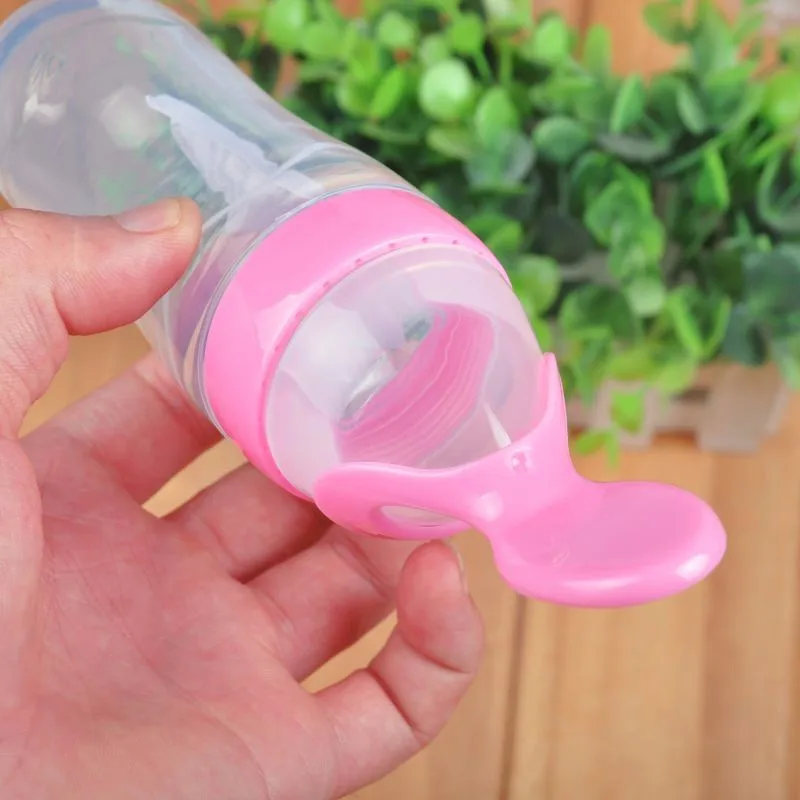
Cons
- They’re a little smaller and won’t hold as much as other pouches.
6. Baby Brezza Baby Food Storage Pouches
Bulk Option
Check Price
This package gives you 10 reusable baby food pouches so you can freeze your food directly in the pouches for later use instead of having to transfer it from a storage container. Each pouch has a clearly-marked max fill line and a double zipper to prevent leaks and spills.
These pouches can be cleaned easily — water can run straight through — and the corners are rounded to prevent food particles from getting stuck. They’re even dishwasher safe if you’d rather not hand-wash your pouches.
There’s a handy peek-a-boo window on the side so you can see how much food is remaining. You may also use food labels and attach it to your pouch with your child’s name, food, and date for maximum safety.
Pros
- They’re freezer safe.
- BPA-, phthalate-, and lead-free.
- You get a large package of pouches.
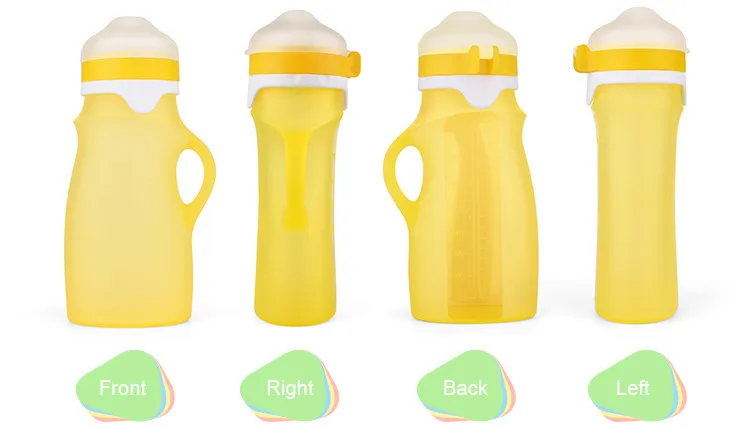
- Filling funnel included.
Cons
- May need to purchase baby food labels.
- Will probably require immediate cleaning to prevent the food residue from sticking to the pouch.
7. ChooMee Reusable Baby Food Pouch
The Perfect Try-it-and-See Pack
Check Price
If you’re unsure if reusable storage pouches are suitable for you, you don’t want to go “all in” right away. This petite 4-pack gives you the perfect opportunity to try them out and see whether you want to start building a larger collection.
The cute, colorful designs will grab the interest of your little one, and the 5-ounce capacity is a versatile size that will work for both younger or older babies.
They can be washed on the top rack of the dishwasher and tossed in the freezer for longer-term food storage. They also have a window at the top to see the quality and quantity of the food remaining.
If you have a younger baby, you can buy a silicone spout separately to cover the hard spout.
Pros
- They’re cute.
- They hold 5 ounces of food.
- The bottom opens completely for easy cleaning.
Cons
- The silicone spout is sold separately, making it an extra expense.
- There are only four in a package.
What are Reusable Baby Food Pouches?
Reusable baby food pouches are food storage containers that resemble the popular, squishy, single-use baby food pouches with twist-off caps available at most grocery stores. This pouch-style design is a newer innovation compared to the more traditional glass baby food jars.
Reusable baby food pouches typically have a spout on one end for releasing the food and a zippered enclosure on the other end for filling the container.
Why Do I Need Reusable Baby Food Pouches?
- They’re convenient: Because of their squeeze-and-suck design, pouches make it easy for babies to self-feed. This makes them ideal for on-the-go situations or when mom doesn’t have time to sit down and feed the baby.

- They’re economical: Disposable pouches of baby food can cost upwards of $2 each. Glass jars can run around $1. If you buy organic baby food, the prices jump even higher. You can make your own baby food for pennies, spoon it into a reusable baby food pouch, and — voila! — instant savings.
- They’re healthier: When you make baby food at home and serve it in a reusable baby food pouch, you control the quality of ingredients and the sugar content of the final product. You ensure that you’re only giving your baby your best.
- They’re less messy: If your baby is self-feeding, they can pop the spout of the pouch in their mouth and feed themselves with minimal mess. If you’re feeding them with a baby spoon, it’s also less messy to squeeze the puree onto the spoon instead of dipping it in a jar where the handle may get food on it and make a mess.
- They’re environmentally friendly: One of the major drawbacks of the baby food pouch craze is that they’re not recyclable like the old glass baby food jars (1).
 Reusable baby food pouches give you the best of both worlds — the feeding convenience of a pouch without all the waste.
Reusable baby food pouches give you the best of both worlds — the feeding convenience of a pouch without all the waste.
In Summary
Reusable pouches are not just for moms who make their own baby food. You can spoon puree from a traditional glass baby food jar into a reusable pouch to instantly transform it into a convenient on-the-go meal babies can feed themselves.
How to Choose Baby Food Pouches
- Size: Know the volume your baby eats, and buy a pouch that corresponds or is a little larger. You can always fill it with less food, but if you overfill it and your baby does not eat the whole container, you’ll need to toss out the leftovers, which is wasteful.
- Material: Choose a container made of a material free of BPA, PVC, and phthalates as they’ve been linked to cancer and hormone disruption.
- Easy to Clean: Choose a pouch that’s easy to clean. Rounded corners are less likely to retain small food particles than sharp, square corners.

How Many Reusable Food Pouches Do I Need?
The number of baby food pouches you need will vary based on your frequency of use and how willing you are to wash them regularly.
It will also depend on whether or not you plan to use them for food storage or eating.
Some mothers like to make a full batch of baby food and fill the pouches directly, tossing them in the freezer and having them available at a moment’s notice. Others make and store their baby food separately, filling the pouches as needed.
The good news is that most reusable baby food pouches come with several in a pack. However, if you plan to use them to store food, you may need to buy extra.
How to Clean Reusable Baby Food Pouches
While convenient to use, food pouches can be a bit cumbersome to clean. Follow the manufacturer’s guidelines, but cleaning for most is pretty standard:
- Remove the top or open the spout.
- Open the bottom zipper.
- Wash with warm, soapy water until all residue is removed.

The Bottom Line
Our top pick is the Healthy Planet Reusable Pouch. They come in two sizes, so you can choose the perfect size for your baby’s appetite. They are free of harmful chemicals and are transparent, so you can see the quality and cleanliness of the inside of your pouch.
Plus, they’re recyclable, so when you’re done with them, you don’t have to feel guilty about tossing them in the trash.
Self-feeding is fun, but it doesn’t have to be messy. And it also doesn’t have to come at the expense of the environment. Reusable pouches are great for your little one’s nutrition, good for the environment, and encourage your child’s independence.
Feedback: Was This Article Helpful?
Thank You For Your Feedback!
Thank You For Your Feedback!
What Did You Like?
What Went Wrong?
90,000 bottles for feeding a child-
9000 No reviews
Go to cartGo to product card
-
Little0004 Reviews No
Go to the basket to the CARS to the product card
-
3 480 ₽
Reviews No 9000,Go to the BASING CARNE
9,0005 9000. -
in the presence 220 ₽
No reviews
Go to cartGo to product card0008 120 ₽
Reviews No
Go to the Basket to the product card
-
Available in the presence
-
Little
185 ₽
No reviews
Go to cartGo to product card
-
Available ₽
No reviews
Go to cartGo to product card
-
Go to cartGo to product card
-
in the presence of
265 ₽
Reviews No
Go to the Knek to the product Card
- 9000
Go to cartGo to product card
-
Available0007
Go to the basket to the product card
-
Available
224 ₽
Reviews No
Go to the COMPLE COMPLE 9000
,000,000 9000 -
Available
185 ₽
9000 Go to cartGo to product card
-
Little
0005 Go to the basket to the product card
-
Available
210 ₽
Reviews No
Go to the CASING CARKING
-
9000 9000 · In the availability No reviews
Go to cartGo to product card
-
Go to cartGo to product card
-
Little
210 ₽
Reviews No
Go to the Knek to Card
-
Go to the WASING CARK
Available
290 ₽
Reviews No
Go to the WARK to the product card
2 568 ₽
No reviews0007
No reviews
Go to cartGo to product card0005 Reviews No
Go to the Basket to the product card
BUSKI nutrition
Every infant who drinks infant formula from a polypropylene bottle ingests an average of 1.58 million microplastics per day. This figure differs by region: in African countries it is 14.6 thousand particles, and in the most developed countries of the world it reaches 4.55 million. The largest contribution to the emission of microplastics in infant formula is made by the body of the bottle, and polypropylene accessories emit it much less. The article was published in the journal Nature Food .
Many studies of plastic pollution affect marine ecosystems, but global transport has already led to the widespread distribution of microplastics in terrestrial biomes, including in the human body. For example, the average US resident with a chair gets rid of 74,000 to 211,000 microplastics every year. 62.8 percent of these particles are polypropylene, but the ways this polymer enters the body have not yet been fully established. Polypropylene is considered a type of plastic that is safe for health and is actively used for the production of food packaging, including bottles for infant formula. Such bottles are subjected to high temperatures by people during sterilization and shaking, which carries a potential risk for the active release of microplastic particles.
For example, the average US resident with a chair gets rid of 74,000 to 211,000 microplastics every year. 62.8 percent of these particles are polypropylene, but the ways this polymer enters the body have not yet been fully established. Polypropylene is considered a type of plastic that is safe for health and is actively used for the production of food packaging, including bottles for infant formula. Such bottles are subjected to high temperatures by people during sterilization and shaking, which carries a potential risk for the active release of microplastic particles.
Scientists led by Donzhu Li of Trinity College Dublin have studied the influx of polypropylene particles from bottles into infant formula. At the beginning of the study, they collected data on sales of such bottles in 48 regions of the world, covering 77.6 percent of the world's population.
Next, they combined this data with the results of a simulation experiment on the operation of polypropylene bottles.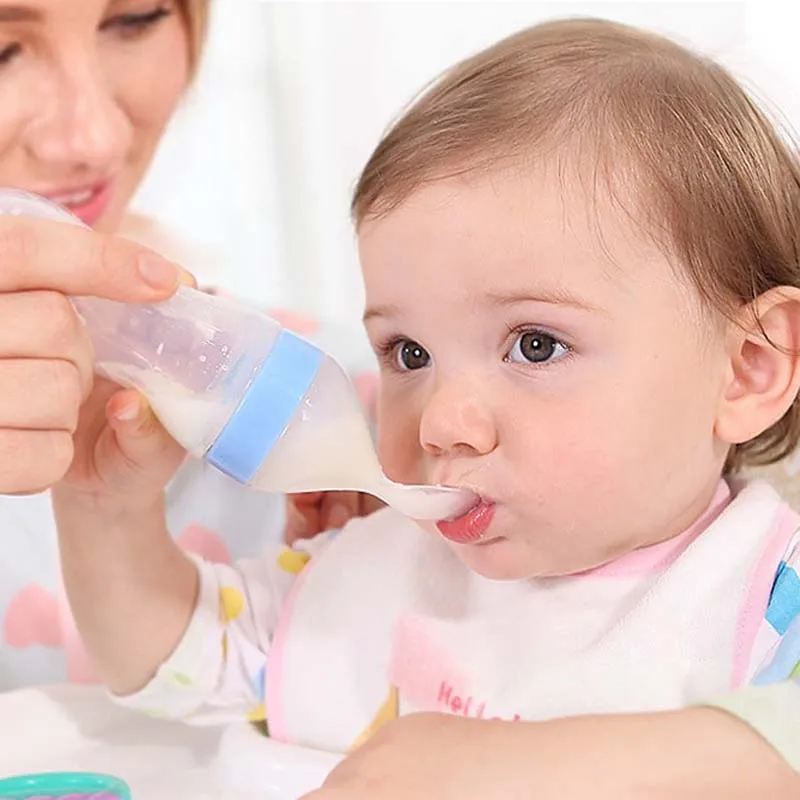 The course of the experiment followed the WHO recommendations for the preparation of infant formula and included sterilization and shaking of the bottles. Next, the water from them was passed through a gold-coated filter with a pore diameter of 0.8 micrometers to collect polypropylene particles.
The course of the experiment followed the WHO recommendations for the preparation of infant formula and included sterilization and shaking of the bottles. Next, the water from them was passed through a gold-coated filter with a pore diameter of 0.8 micrometers to collect polypropylene particles.
The authors of the study concluded that polypropylene is present in at least one component - body or accessory - in 82.5 percent of baby food bottles worldwide. At the same time, the polymer turned out to be an active source of microplastic particles: bottles, and the body and accessories of which were made of polypropylene, produced from 1310000±130000 to 16200000±1300000 microplastic particles per liter of liquid. The body material made the greatest contribution to such emission, but if the body was made of glass and the accessories were made of polypropylene, then the number of emitted particles was orders of magnitude smaller and ranged from 69700±9800 to 267000±15000 particles per liter.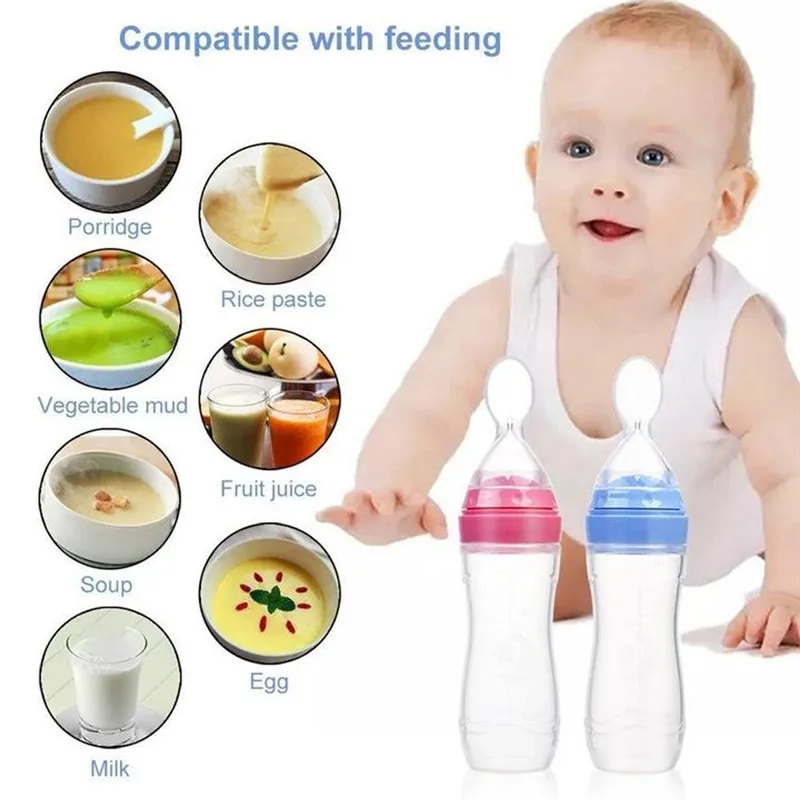 The number of particles was also affected by an experimental increase in the heating temperature of the bottles: for example, at a temperature of 25 degrees Celsius, 0.6 million particles were released into the water, and at a temperature of 95 degrees Celsius - already 55 million (as a rule, the mixture for feeding is not heated above 70 degrees Celsius).
The number of particles was also affected by an experimental increase in the heating temperature of the bottles: for example, at a temperature of 25 degrees Celsius, 0.6 million particles were released into the water, and at a temperature of 95 degrees Celsius - already 55 million (as a rule, the mixture for feeding is not heated above 70 degrees Celsius).
It turned out that, on average, every baby fed from a polypropylene bottle swallows 1.58 million microplastic particles per day. Depending on the region, this figure ranges from 14,600 to 455,000 particles - in developed countries, intake is higher.
The scientists noted that they calculated the amount of microplastics entering the child's body is underestimated. The pore diameter of the filter (0.8 micrometers) was larger than nanoplastic particles, and it was not taken into account in the study. It is also known that some people use water from plastic electric kettles to prepare the mixture (and do not always change it the next time they are turned on), which contains microplastic particles.


